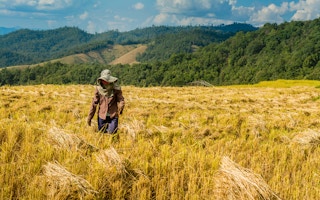The Philippines and the Food and Agriculture Organization (FAO) have started the use of unmanned aerial drones to assess farmlands which are at risk from natural disasters.
To this end, two drones have already been sent over the country to assess the current El Niño conditions.
“Imagery generated from drone flights can reveal where agricultural infrastructure projects and service facilities like irrigation or storage facilities could be sited to best serve local farmers. The technology can also potentially support in the assessment of coastal and forest areas,” said Jose Luiz Fernandez, FAO representative in the Philippines.
About 25 FAO and government technical experts will be deployed across the archipelago to support the mission. They were recently trained over three weeks on how to fly the vehicles.
The drones are equipped with navigation and photogrammetric equipment that can generate maps from aerial photographs. An interesting thing is the Normalised Difference Vegetation Index, a formula used for assessing vegetation and plant health.
The data can be used to view where agricultural systems are at particular risk from natural disasters and identify ways through which such risks can be tackled. Ground contouring, building retaining walls and planting protective vegetation are some of the ways to minimise risks.
Capable of covering up to 600 hectares a day, the drones should significantly accelerate the process of risk analysis, according to Christopher Morales, director of field operations for the Philippines’ department of agriculture.
“It is efficient, it saves time and we will be using a reliable source of data so that we can plan and provide appropriate interventions and responses for our farmers in times of disasters and calamities,” he says.
A tool for countries at risk from disasters
The Philippines is among the world’s most at-risk countries for tropical storms and other disasters.
Over the past decade, earthquakes, typhoons and floods have claimed thousands of lives and periodically left parts of the archipelago’s infrastructure and economy in tatters.
Such disasters affect farms and food systems and undermine food production capacity for years to come.
The vulnerability of the agriculture sector to natural hazards is evident elsewhere across the globe as well. Nearly a quarter of all damages inflicted by natural hazards in the developing world are absorbed by the agriculture sector, FAO studies have shown.
Agriculture is one of the main sectors of the economy that is severely affected by climate change. The recent El Niño phenomenon is a testimony to that, Maria-Helena Semedo, the FAO deputy director-general for natural resources had said recently.










